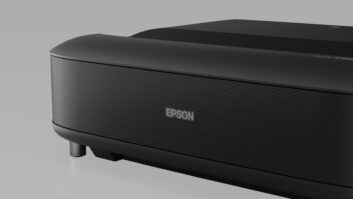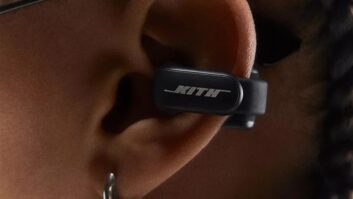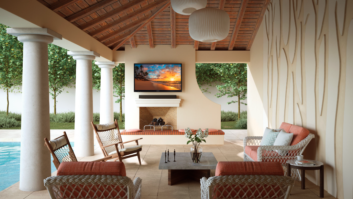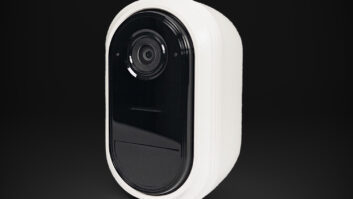NEW YORK — As promised, International CES delivered 4K Ultra HD TV in all of its big, and even not-sobig- screen glory, giving legions of anxious TV shoppers a few additional considerations to ponder while browsing this year.
The following is a glance at what some of the biggest TV brands presented in CES press conferences for their upcoming product lines:
Samsung did everything at CES to make itself known as the leader of Ultra HD TV technology except hold elections. It was the first to announce the UHD Alliance, which will settle new standards issues, such as color space and high dynamic range targets. It unveiled a new “SUHD” moniker for its advanced JS9500 series LED LCD TVs that employ its concept for quantum dot UHD technology using Samsung’s proprietary, eco-friendly nano-crystal technology and intelligent “SUHD remastering picture quality engine.” The technology is said to deliver advances in contrast, brightness, and color reproduction to raise the picture quality bar another notch.
The company also showed off its next phase of smart TVs driven by the Tizen platform, and even rolled out another massive flexible-screen LED LCD TV using all of the latest technologies, but this time with a promised 2015 arrival date.
LG stayed stride for stride with its South Korean rival by throwing everything but the kitchen sink into its 2015 4K Ultra HD TV basket. LG showed not one but two new approaches to expanded color gamut LED LCD TV technology, and unveiled a new and improved WebOS 2.0 smart platform with access to diverse new streaming services, including 4K UHD offerings.
But its crown jewel remains 4K UHD OLED, where its 77-inch 4K UHD curved screen model continued to stun passersby with color and brightness performance. While others fiddle with high dynamic range and expanded color gamuts on LED LCD sets, LG’s OLED display dropped its “infinite contrast ratio” on the floor, made possible by the self-emissive nature of OLED technology.
Sony introduced a more focused Bravia lineup, highlighting Ultra HD TV and a new ultra-thin form factor TV. At the top of the line is the XBR X940 series, in a 77- inch screen size, and similarly configured XBR X930, which will come in a 65-inch screen size.
The X930 includes Sony’s Triluminos Display technology for improved color accuracy, but unlike many others this year, the company is no longer using the quantum dot approach that this technology referred to two years ago.
Both series include powerful front-facing speakers, but differ slightly on their approach to high dynamic range.
The X940 includes Sony’s X-tended Dynamic Range Pro HDR local dimming backlight circuitry while the X930 uses a step-down X-tended Dynamic Range system.
This year’s step-up sets also include a new X1 processor that is said to improve color accuracy, contrast and clarity of both 4K UHD and HD content. Sony also added support for Google’s Android TV OS, with access to gaming and voice commands.
For those who like their smartphones and TVs razor thin, Sony claimed the title of this year’s thinnest LCD TV with its XBR X900C series TVs, offering screen depths over most of the surface of just 4.5mm (about the thickness of three quarters). Models will come in the 55-, 65- and 85-inch screen sizes.
Though not as loudly promoted, the mac daddy of Sony’s 2015 TV offerings was its new VPLVW350ES (shipping this month at a $10,000 suggested retail) 4K projector, featuring 4K (4,096 by 2,160) resolution, 1,500 lumens of brightness, 3D capability and the aforementioned Triluminos technology. This unit will present the largest 4K screen sizes you can get for the home, and takes full advantage of the higher resolution benefits of 4K. Sony remains the only vendor with a home-cinema targeted native 4K UHD projector, and the pictures are getting better and better as Sony waits for the competition to catch up.
Sharp took its pixel-splitting prowess to the next level at CES by unveiling its 80-inch “Beyond 4K” LED LCD TV, which basically moves last year’s Q+ pixel-splitting technology up from FullHD to a 4K Ultra HD screen.
The system also employs Sharp’s four-pixel-color Quattron technology for the first time in a 4K LED panel.
The Beyond 4K TV is able to take the 4K Ultra HD (3,840 by 2,160) screen, split the pixels vertically and boost the sub-pixel structure to what amounts to 7,680 by 4,320 subpixel resolution.
Sharp said the technology enables each subpixel area to independently create separate color values resulting in 66 million independently controlled subpixels.
Sharp combines this with its Quattron technology, which adds a yellow subpixel to the standard red, green and blue for a billion more shades of color.
The set also includes Sharp’s Spectros Rich Color Display technology, which is an improved LED backlight system that provides a wider color spectrum than conventional LED TVs.
The set also employs full-array LED backlighting for deep contrast and black-level performance that is further enhanced with built-in High Dynamic Range Technology.
The set will also include Sharp’s new SmartCentral 4.0 platform with Android TV, capable of accessing GooglePlay TV apps among other things.
In other 4K UHD TV offerings in 2015, Sharp demonstrated another one of “the industry’s thinnest large screen LCD televisions” in the 70-inch Super Slim 4K UHD television. With a depth of less than half an inch, the set uses new materials to distribute light more effectively through the LCD panel to achieve large screen sizes with very slim footprints, Sharp said.
Sharp’s core 4K TV lineup will include the Aquos UB30, UE30 and UH30 model series.
These will encompass expanded screen sizes, 43-inches through 80-inches. Two of the series will feature the SmartCentral 4.0 smart TV platform that is enhanced this year with Android TV technology.
The UB30 4K UHD series uses the SmartCentral 3.0 platform introduced last year with support for 4K streaming services, and includes the 43- ($749 suggested retail), 50- ($999), 55- ($1,199) and 65-inch ($2,299) screen sizes. The largest model will feature local dimming technology.
Panasonic in recent years has clearly shifted its emphasis away from consumer technology to business-to-business opportunities, but it showed an interest in reclaiming at least some of its former CE glory with new 4K TV offerings, and even a prototype 4K Blu-ray player (although a formal spec has not been completed yet).
The company introduced three different 4K Ultra HD TV lines for 2015, with nine total models.
The flagship CX850 series will include the 55- and 65-inch screen sizes, both with Local Dimming Pro, Studio Master Drive, and Super Bright Panel and Image Motion 240Hz technologies. The company has also added a proprietary Dynamic Range Remaster technology that is said to achieve dramatically enhanced image reproduction and rendering capabilities in the high luminance range.
The sets, along with several other step-up models for 2015, include the Firefox OS.
Panasonic said the series has submitted for both THX UHD and Control4 certification.
The CX800 series will include the 55-, 60- and 65-inch screen sizes; includes the Firefox OS, 3D capability; and adds Local Dimming and Black Gradation Drive technologies.
Other series include the CX650 in 55-, 60- and 65-inch screen sizes, and the CX600/CX610 series in the 50-inch screen size, which drops the Firefox OS.













